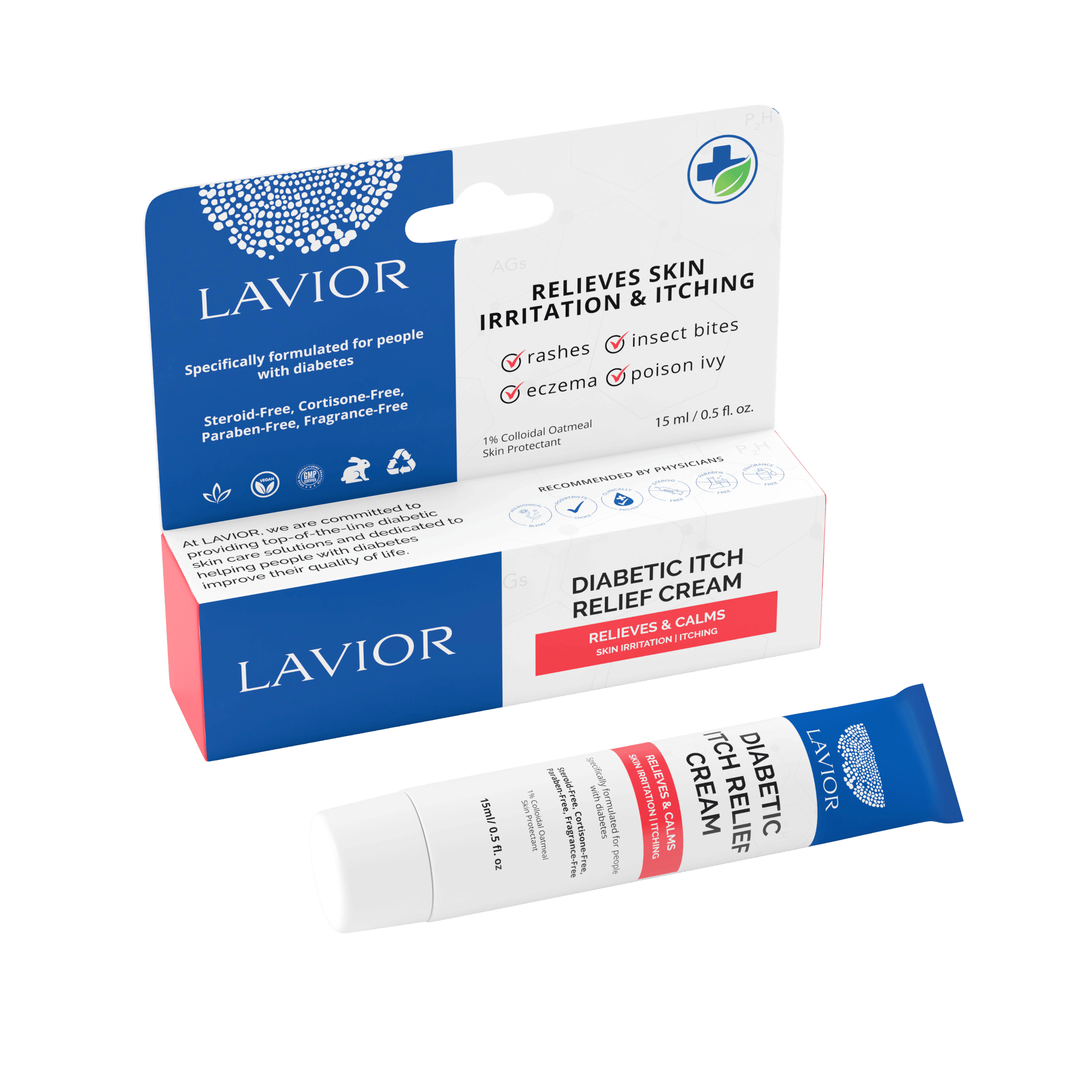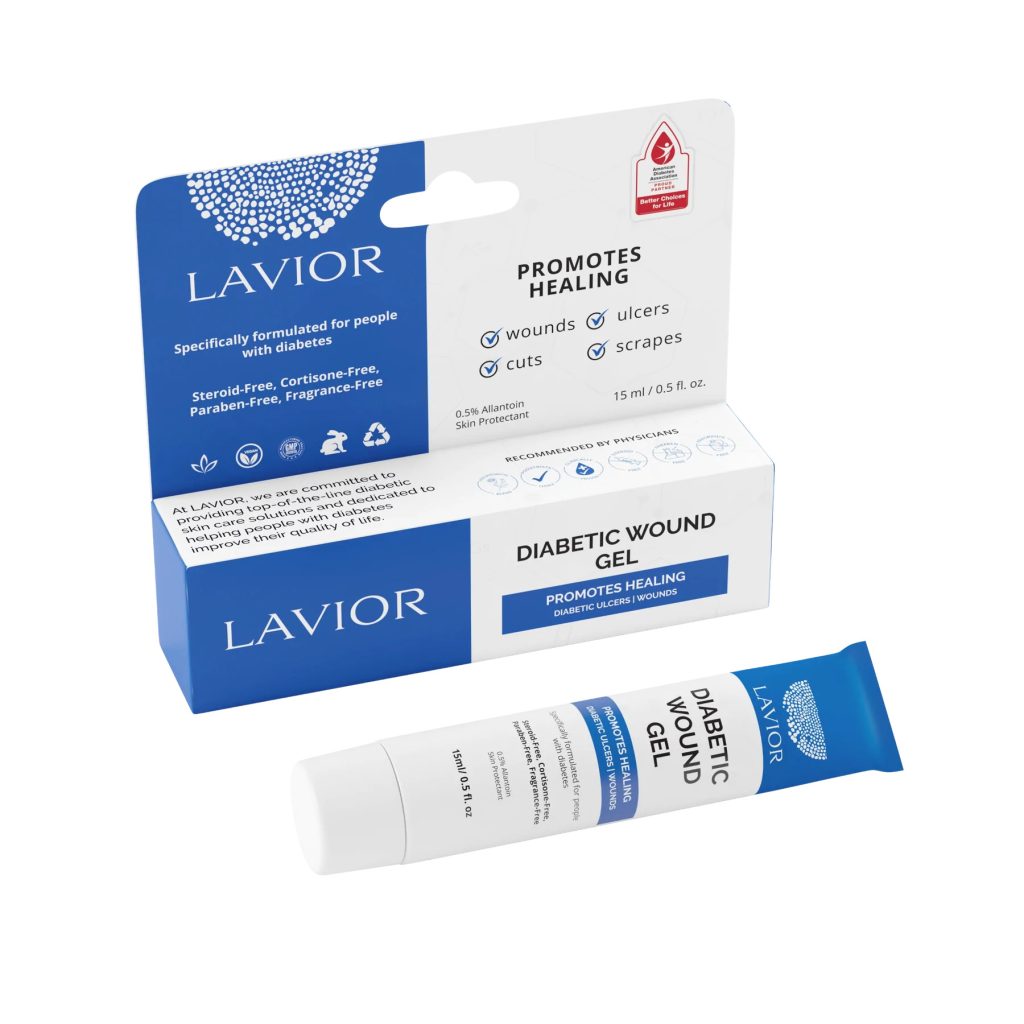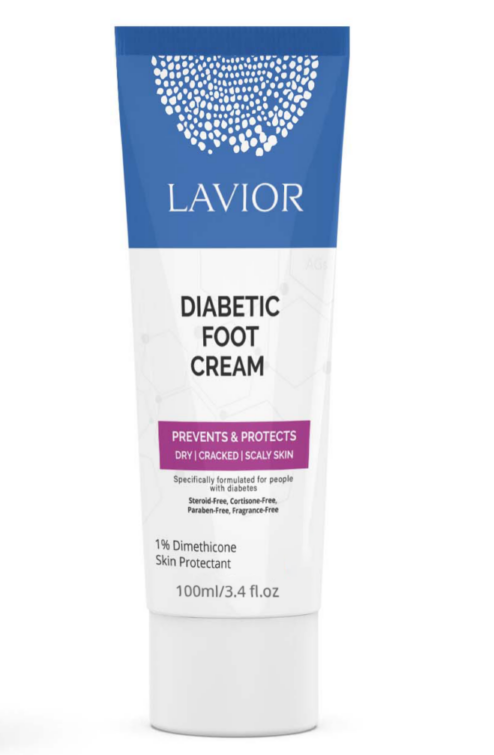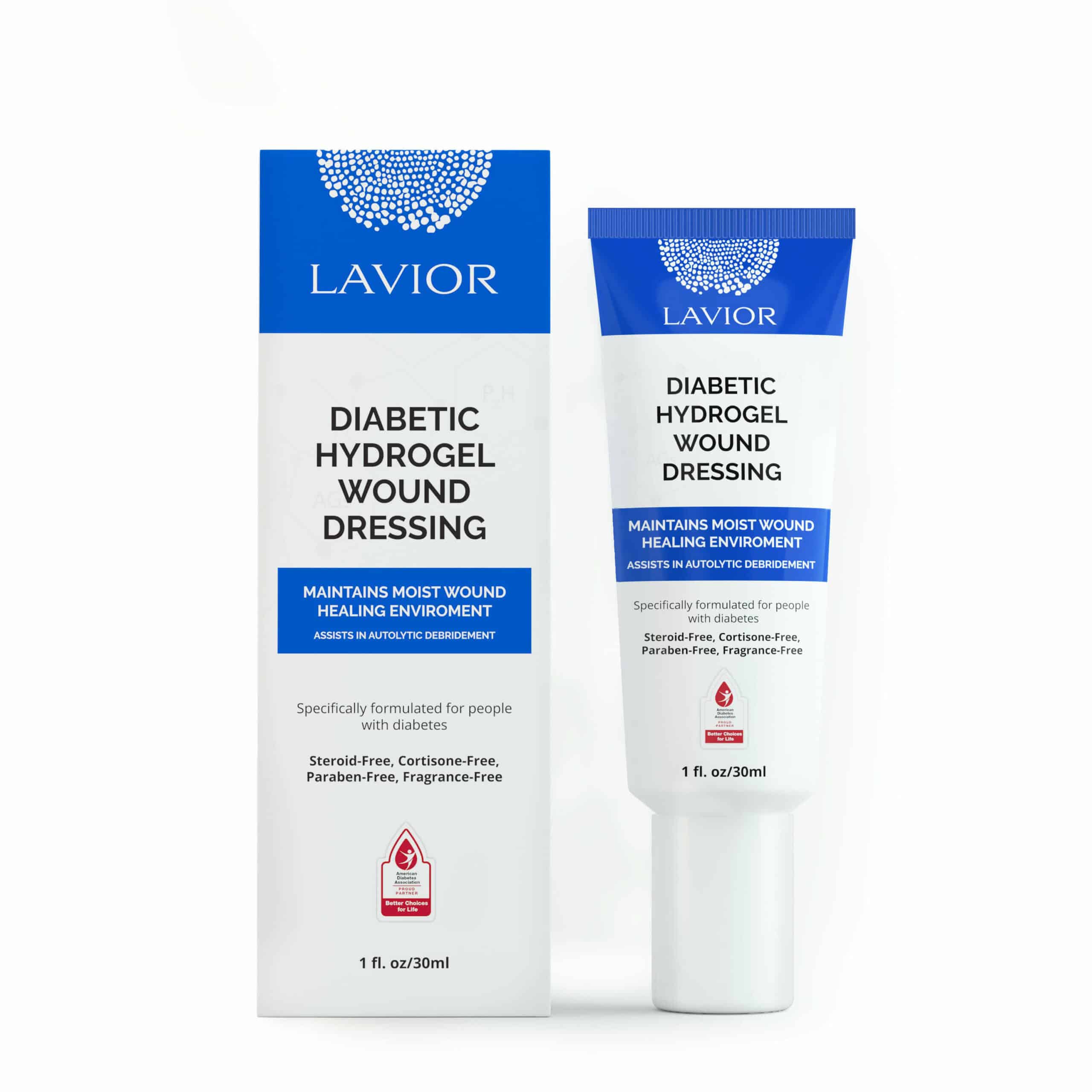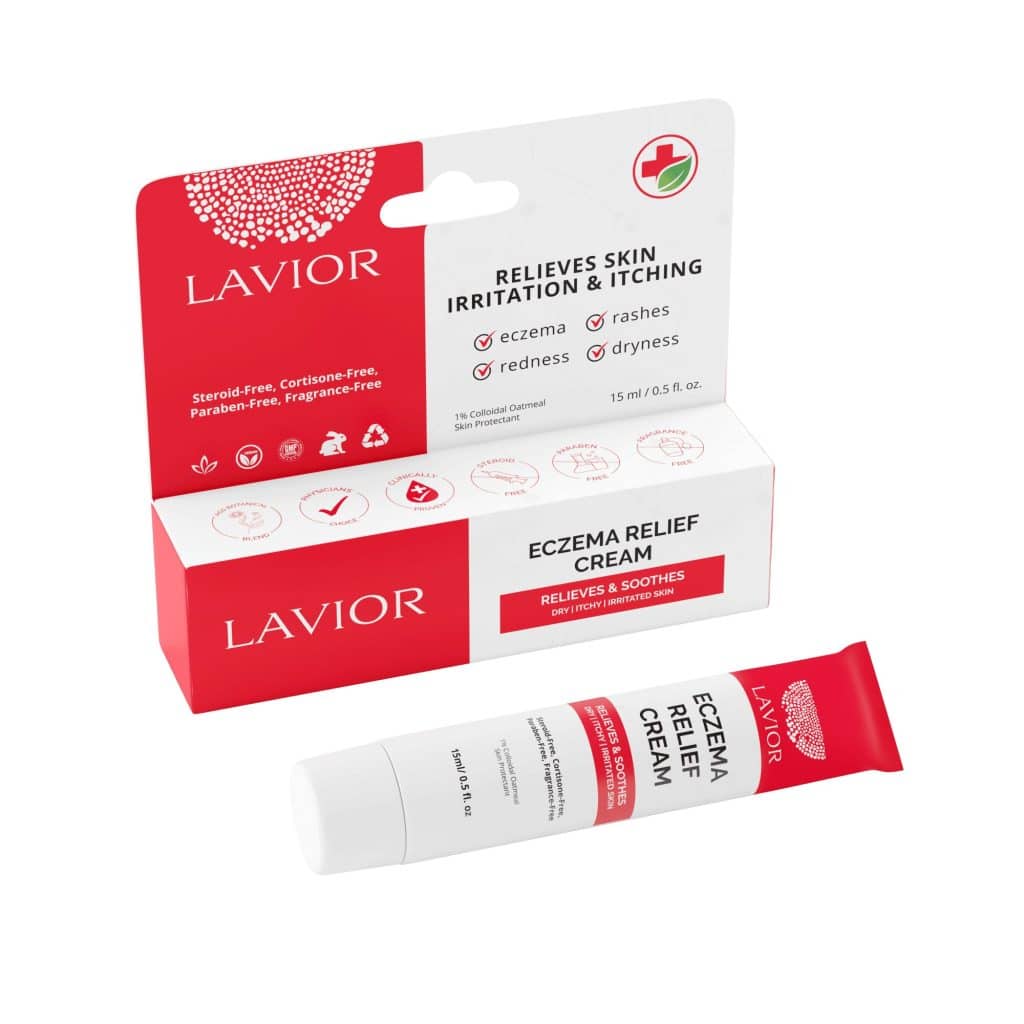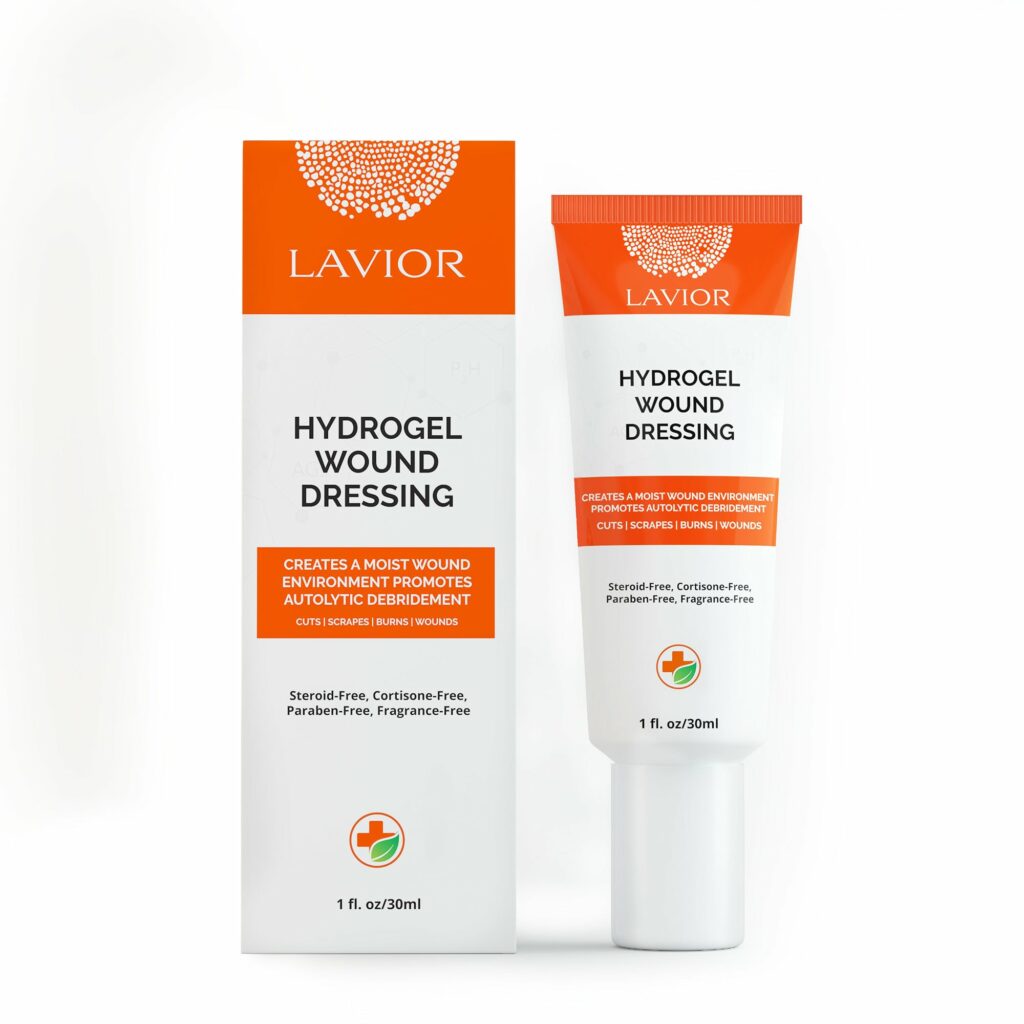Study Author:
Denise Tropea, DPM.
Wound Care Specialist, Las Vegas, Nevada – USA
Patient:
Caucasian male aged 64.
History:
Diabetic for 22 years with sensory neuropathy. Patient is currently insulin dependent type-2 diabetic, which is poorly controlled. Patient presented to the office on Jan 9th 2018 with an ulcer on the tip of his right big toe. Patient was on vacation visiting family and developed a blister in this area. He sought medical attention and was given antibiotics at that time.
Wound Presentation:
Ulceration of 2cm x 1.5cm on the distal medial aspect of the right big toe. It has a red granular base with cellulitis to the level of the big toe joint.
Prior Treatment:
Keflex oral antibiotics and Neosporin topical antibiotic ointment.
Study Methodology:
Application of Lavior D-Care once a day with wound dressing (bandage).
Product(s) Used in Study:
LAVIOR D-Care Diabetic Wound Care Gel.
Study Duration:
2 and a half months.
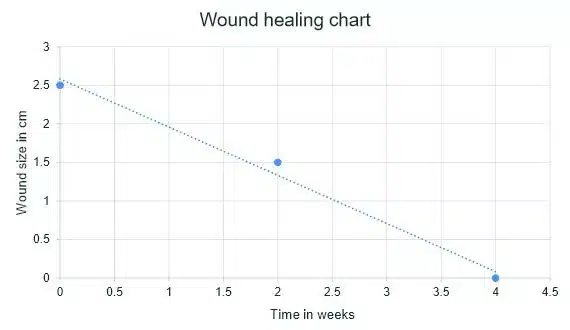
Treatment Narrative
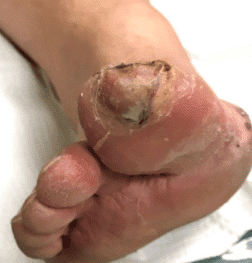
INITIAL PRESENTATION
Initial presentation of wound with cellulitis of right big toe. Red granular base with serous drainage. Wound size: 2×1.5 cm.
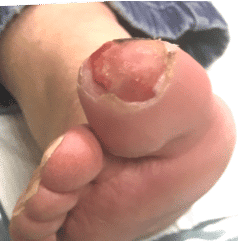
2 WEEKS OF TREATMENT
The cellulitis has diminished, and the wound is shrinking in size. There is some dried eschar around the wound. Wound size: 1.5×1 cm.
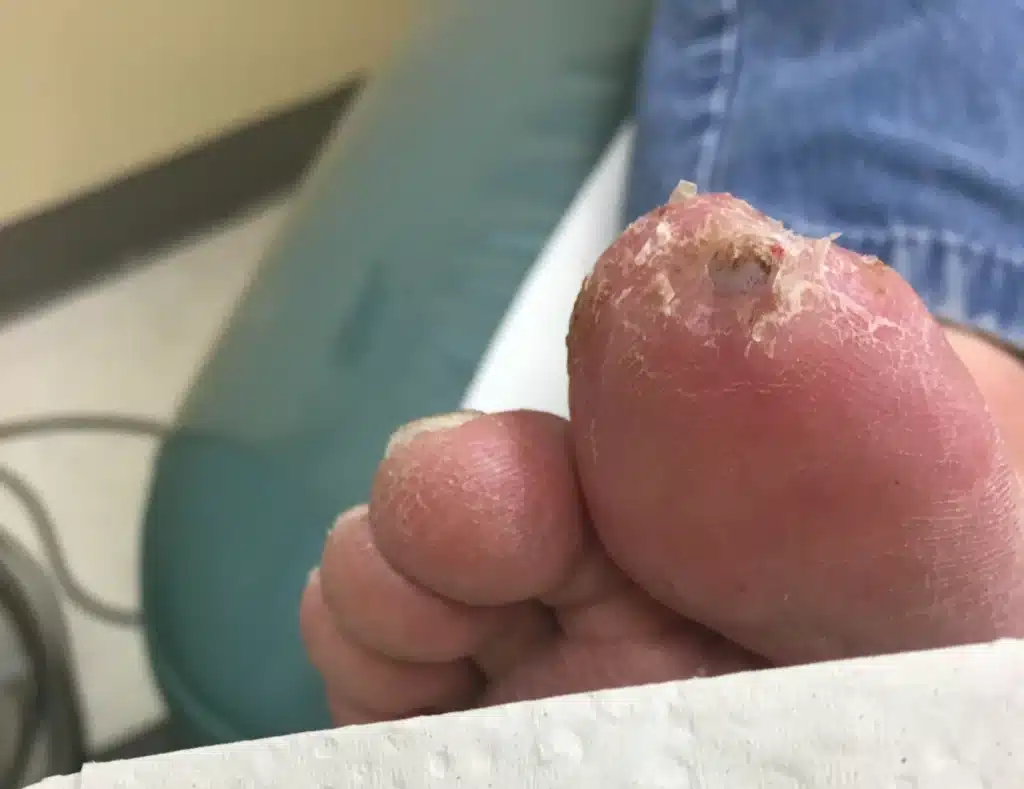
4 WEEKS OF TREATMENT
At four weeks from initial presentation, the cellulitis has resolved, and the wound continues to shrink. There is no odor or drainage, and it continues to improve. Wound size: 1×1 cm.
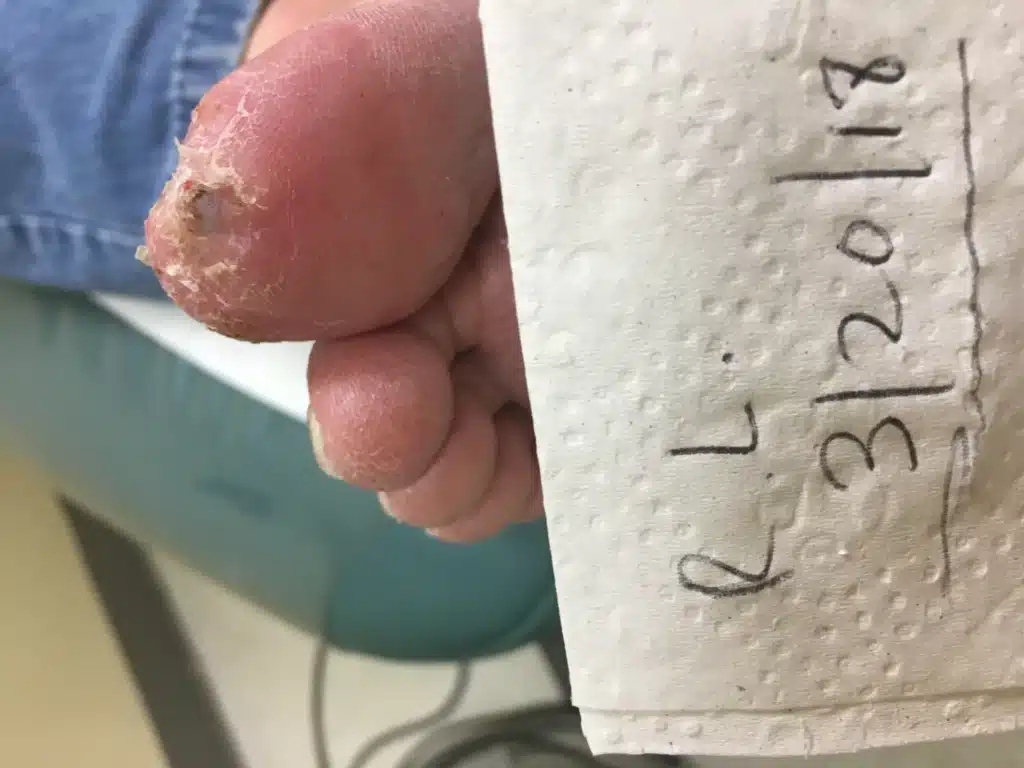
6 WEEKS OF TREATMENT
Patient returns to office 6 weeks from initial presentation, and the wound has shown much improvement. There is no drainage and a small eschar noted. There are no visible signs of infection. Wound size: small eschar.
RESULT SUMMARY
The case above demonstrates the healing power of the D-Care Wound product. This patient is well-known to our office and has had wounds in the past. They are slow to heal due to his long-standing diabetes and neuropathy. Once the wound was treated with D-Care, we saw the progression of healing and the ultimate closure of the wound.



